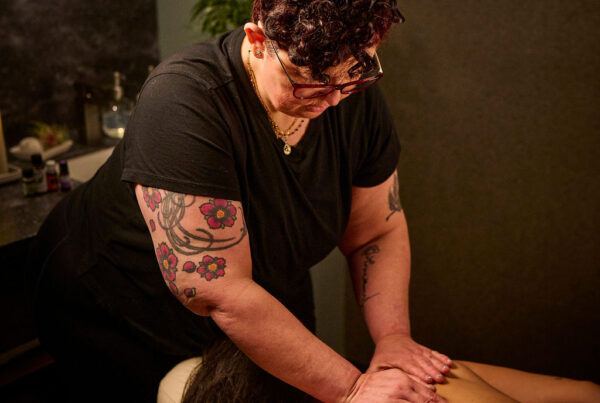If you’re trying to shed some extra body fat, seeing the numbers go down on a scale can be super rewarding. But what happens when the numbers don’t drop the way you want them to? Is this a reason to convince yourself you’re not doing things right? Not necessarily. We’ll even argue that your scale is non-essential at best—and harmful and disruptive at worst.
The Case for Ditching Your Scale
We’re not saying the numbers on the scale “lie,” per se. We certainly don’t want to add any fuel to the fire which says your weight is something to be ashamed of (news flash: it isn’t). What we are saying is that the numbers on a scale rarely show the whole picture of what’s going on when it comes to your weight loss journey.
In other words, your relative success is not linearly correlated with how much you weigh. So many other factors come into play, especially muscle development (yes, muscle really does weigh more than fat).
Sure, a scale is just another tool—we’re not trying to demonize it. But given how easy it is for this tool to turn into a source of unnecessary stress, shame, and anxiety, we severely question its utility in your weight loss arsenal.
Our point: if you’re relying solely (or even mostly) on how much weight you lose as a way to track fitness progress, you could be missing the big picture, and potentially harming yourself emotionally and mentally in the process.
Fortunately, we’ve got plenty of other ways to track fitness progress that will keep yourself accountable and inspired.
5 Ways to Track Fitness Progress (No Scale Required!)
1. Get your body fat percentage tested
Your amount of body fat compared to your amount of lean body mass (muscles, bones, and other connective tissues) is a preferred progress marker for many physicians, trainers, and researchers. There are a few ways you can test yours ranging from cheap to pricey, including calipers, bioelectrical impedance, DEXA scans, and water or air displacement (like the BOD POD®).
What matters most is that your measurements are consistent, so use the same technique for pre- and post-tests.
2. Take before and after photos
You don’t have to show these to anyone! But remember: you see yourself every day, so it can be hard to notice the changes in your appearance. Photos taken in monthly intervals is a great way to document your journey…just remember to smile!
(A corollary is to take note of how your clothes are fitting. Your body composition likely can and will change with hard work and honest effort, even if your weight doesn’t.)
3. Try a workout test and re-test
Exploring what your body can do (rather than only focusing on how it looks) is such an empowering way to track fitness progress, so testing and re-testing a baseline workout is a fantastic idea! Choose a movement or exercise that’s challenging but safely doable for you, such as:
- A timed 500-meter row
- A timed 1-mile run
- A max effort lift (e.g., deadlift, bench press)
- As many rounds as possible (AMRAP) of X in Y amount of time
Need some tips? Ask a trainer!
4. Order up some lab work
Your blood tells a great story about your overall health, and companies like WellnessFX are bringing the world of blood analysis right to your doorstep. You can do it yourself or, even better, schedule a check-up with your physician. Some great tests to run include:
- Blood lipids (including HDL, LDL, and triglycerides)
- C-reactive protein (a measure of inflammation)
- TSH (a measure of thyroid function)
- A1C and blood glucose
- Vitamin D
- BUN (a measure of kidney function)
5. Do a health inventory
Since you’ve started busting your butt in the gym and making changes to the way you eat, have you been sleeping better? Has your doctor reduced or eliminated your medication for a chronic illness? Do you have more energy? Is your skin clearer? Do you have fewer food cravings? Is your self-talk more empowering? Is your relationship with food healthier?
These are important pieces of data which may not be as easy to measure or observe, so take the time to reflect on them. You’ll likely be pleased with what you find out.
Action plan: Challenge yourself this month! See if you can go scale-free for a full 30 days. Pay close attention to other self-identified areas of your health for tracking your progress, and consider sharing your experience with our community!







